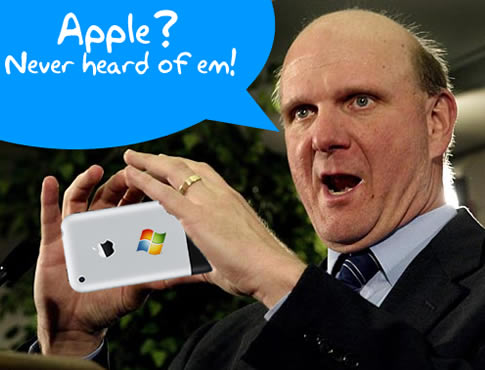I’ve written before about how dangerous waiver is for lawyers. It lurks everywhere, like sharp coral just a few inches beneath the water off an inviting tropical beach.
In Microsoft’s recent loss to i4i in federal court in Texas affirmed by the Federal Circuit, Mister Softee (stock trader slang for Microsoft), found itself hung up on a reef with razor sharp coral when the Federal Circuit may have refused to reverse a $290 million trial verdict on what the court considered a waiver technicality.
As every experienced trial lawyer knows, trials are a virtual waiver landmine – if you don’t proffer the evidence a judge excludes, you’ve waived it on appeal. If you don’t object to jury instructions, you waive the right to challenge them on appeal. This list seems almost endless, and there’s nothing a federal court of appeals likes more than to dismiss an argument on the grounds that it was, somehow, waived during trial.
This having been said, there are a few potential waivers points that lawyers absolutely MUST keep in mind – to the point where the documents that will avoid the waiver should be prepared before trial, subject only to updating as the trial progresses and the moment of truth (or waiver) is reached. One of the most important potential waiver risks arises under FRCP 50.
Before the case goes to the jury the defendant MUST move for judgment as a matter of law (or “JMOL”) – failure to do so means the defendant has waived its right to do so following the jury verdict. Thus, even if the ultimate jury verdict is without a legally sufficient evidentiary basis, the judge may not upset it if the defendant failed to make a timely motion for JMOL. (The reasons for this are arcane, and not of great importance here, but the fact that the motion MUST be made pre-jury, in order for it to be made post-jury is very important). Best practice is to move for JMOL at the close of plaintiff’s case, and again at the close of all of the evidence.
The JMOL motion must address all issues that form the basis for the motion, and it must be specific – the lawyer cannot simply state, “We move for judgment as a matter of law because plaintiff has failed to satisfy the elements of its cause of action.” This is where the trial lawyer, who is preparing for closing argument, working on jury instructions, dealing with the client, must pay attention. The best practice is to have an associate, with a checklist, who will remind you (force you, if necessary) to address this issue.
What happened in the i4i/Microsoft case?
At the close of evidence Microsoft moved for judgment as a matter of law on various grounds:infringement, willfulness and validity of the i4i patent, but not obviousness as to a certain piece of prior art or, quite importantly, damages.
As a result, the Federal Circuit held that it was barred from considering whether the jury’s damages award was supported by the evidence. as Microsoft requested that it do. The Federal Circuit stated:
Had Microsoft filed a pre-verdict JMOL, it is true that the outcome might have been different. Given the opportunity to review the sufficiency of the evidence, we could have considered whether the $200 million damages award was “grossly excessive or monstrous” in light of Word’s retail price and the licensing fees Microsoft paid for other patents. Cf. Lucent, 580 F.3d at 1325-32. As this court did in Lucent, we could have analyzed the evidentiary basis for the Georgia-Pacific factors, and whether the benchmark (XMetaL) was sufficiently comparable.
However, we cannot. Instead of the more searching review permitted under Rule 50(b), we are constrained to review the verdict under the much narrower standard applied to denials of new trial motions. . . . This standard is highly deferential: we may set aside a damages award and remand for a new trial “only upon a clear showing of excessiveness.” . . . To be excessive, the award must exceed the “maximum amount calculable from the evidence.” . . . We must affirm unless the appellant clearly shows there was no evidence to support the jury’s verdict. . . .
Under this highly deferential standard, we cannot say that Microsoft is entitled to a new trial on damages. The damages award, while high, was supported by the evidence presented at trial, including the expert testimony—which the jury apparently credited. . . . Given the intensely factual nature of a damages determination and our deferential standard of review, we are not in a position to second-guess or substitute our judgment for the jury’s.
No one can say whether the Federal Circuit would have upset the damages award had it applied the more rigorous standard that would have resulted from a pre-jury JMOL motion on damages, but clearly, one must wonder.
To thicken the plot, Microsoft has now asked the Federal Circuit to rehear the case en banc (Microsoft’s brief requesting en banc review here), arguing that the JMOL rule does not apply to damages (since, by definition, damages have not been awarded pre-jury verdict), and presenting a number of other challenges to the damages award. The brief asserts that this case represents “the largest [damages award] ever sustained on appeal in a patent infringement case.”
It’s rare for a federal circuit court to rehear a case en banc where some fundamental issue of law of broad applicability is not at stake, so it will be interesting to see how the Federal Circuit handles this request. Worst case, should it decline, lawyers will have to add to their trial checklist a JMOV motion directed at damages, even before the jury awards damages.
